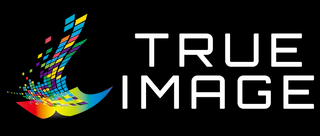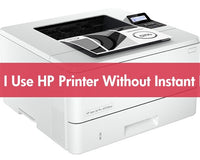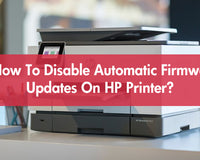Want to add unique fun to your life? Printing stickers at home is a great choice! From notebook decoration to gift embellishment, personalized stickers can instantly enhance the atmosphere. This blog will help you to understand the preparations before printing, the specific operation steps, answer common questions, and help you easily master the skills of printing custom stickers at home.
I. Preparation Before Printing Stickers
Before you start printing your own stickers, it is necessary to first understand the characteristics of inkjet printers and laser printers for printing stickers, and prepare the necessary materials and tools.
1. Two Common Home Printers for Printing Stickers
Inkjet Printers: In terms of color performance, inkjet printers use CMYK four-color or more color inks to mix, which can achieve tens of thousands of color transitions. Therefore, when printing photo-level patterns, whether it is a delicate sky gradient or a gorgeous flower color, they can be presented naturally and smoothly. However, in a humid environment, since the drying speed of liquid ink is affected by humidity, anti-smudge measures need to be taken.
Laser Printers: It has unique advantages when printing text and solid color graphics. The edges of the text are sharp and clear, and the solid color blocks are uniform and full. It is very suitable for making slogans, logos and other types of stickers. However, laser printers need laser-safe sticker paper due to high-temperature fixing (200℃), which melts ordinary coatings.
2. Materials & Tools
You need to prepare the following materials and tools in advance:
Sticker Paper Types
- Matte Paper: The special coating on the surface forms a diffuse reflection structure, which is anti-fingerprint and suitable for text stickers. It does not reflect light when paired with a notebook, which is conducive to reading.
- Glossy Paper: The high-gloss coating makes it reflect a lot of light with bright colors, which can fully show the details and saturation of photos and illustrations. It is suitable for printing patterns such as anime characters to enhance visual impact.
- Waterproof Synthetic Paper: It has plastic-like properties is waterproof, oil-proof and wear-resistant. Suitable for outdoor decoration scenes.
Auxiliary Materials
A sealing agent can improve the durability of stickers. There are two types: transparent spray paint and self-adhesive lamination. Transparent spray paint can form a protective film to enhance waterproofing and wear resistance; self-adhesive lamination is easy to operate and can protect the pattern.
Tools
A precision cutter or pen knife with a steel ruler for precise cutting of stickers; cutting mat can protect the desktop, and its scale and grid lines can assist in measurement and positioning; household hair dryer can accelerate the drying of inkjet printed stickers and prevent ink smearing.

II. Steps for Printing Stickers
After the preparations are done, you can start printing stickers by following the steps below:
1. Printer Settings for Stickers
Paper type selection
- Select "Premium Photo Paper" for glossy paper. The printer adapts to its smooth surface to ensure that the ink is evenly distributed and dries quickly to achieve the best color effect.
- Select "Cardstock" for matte paper. The printer adjusts parameters to prevent ink diffusion and ensure clear patterns.
Resolution & Mode
Turn off ink-saving mode and set the highest resolution (up to 4800×1200dpi) for clear patterns. Because in ink saving mode, the printer saves consumables by reducing the number of ink drops or reducing the concentration of ink drops, but it will cause the pattern color to become lighter and details to be lost.
Paper Feeding Direction
Vertical paper feeding is preferred so that the paper is more evenly stressed during transmission and is less likely to be skewed or jammed. Especially when printing large-format stickers, vertical paper feeding can effectively avoid pattern deviation caused by paper shaking and ensure accurate printing position.
2. Drying Homemade Stickers Properly
Drying
Stand for 10 minutes after printing. Inkjet-printed stickers allow ink to penetrate the paper fibers, and laser-printed stickers allow toner to better combine with the paper. Environmental humidity and other factors will affect the drying speed. Humid environments require longer standing time.
Finger Touch Test
After standing, touch the non-pattern area lightly. If there are fingerprints or ink residues, it means that it is not completely dry. Forced cutting will cause the pattern to be blurred and the edges to be stained. You can use a fan or a hair dryer at a low temperature to accelerate drying.
3. Cutting
Safety Edge
When printing your stickers, reserve a 2mm safety edge to prevent cutting errors from cutting off the pattern and facilitate pasting. When cutting, use a steel ruler and pencil to mark 0.5mm outside the bleeding line to ensure accurate cutting.
Anti-burr Edge
Cut in one direction at a 30° angle between the blade and the paper surface to avoid damaging the paper by cutting back and forth. For complex patterns, it is a key step to use a printer to print stickers with a rough cut with scissors, leave a 1-2mm margin, and then use a cutter to trim finely.
III. FAQs of Printing Stickers at Home
Q1: Why do sticker edges curl?
Cause: uneven stress inside the paper, moisture absorption and expansion.
Solution: seal and store the sticker printing paper and put it in a desiccant before printing; press with a heavy object for 24 hours after pasting; if it has curled, use a hair dryer to treat it at a low temperature and then flatten it.
Q2: What's the smallest printable size?
Theoretically, the minimum printable detail of an inkjet printer is 1mm, but in reality, it is recommended that the detail is not less than 1.5mm due to factors such as ink drying and shrinkage.
The minimum print detail of a laser machine is generally 0.5mm, and special paper is required to ensure the adhesion of toner.
Q3: How to avoid cutting mistakes?
Design a 3mm bleed area; when printing the test positioning line on ordinary paper, mark the cutting direction arrow next to the positioning line. Use a projector to project the positioning line onto the sticker paper before cutting to improve positioning accuracy.

IV. Summary
Matching equipment and materials: Choose the appropriate sticker printing paper for design according to your printer. At the same time, pay attention to the environmental adaptability of the material. For example, waterproof synthetic paper is preferred for outdoor use.
Pay attention to drying and protection: Drying is the key link to ensure the quality of stickers, and drying measures need to be strengthened in humid environments. Sealing treatment can significantly improve the durability of stickers, and the appropriate sealing method can be selected according to the usage scenario.
Precise cutting: Ensure that the sticker pattern is complete and beautiful by reserving safety edges and mastering correct cutting techniques.
With these tips, you can easily create personalized digital printing stickers at home—no need for expensive tools! Unleash your creativity and enjoy the fun of DIY sticker printing today.
















